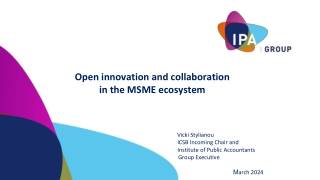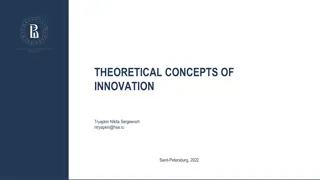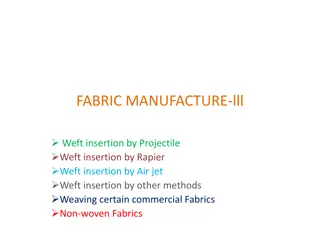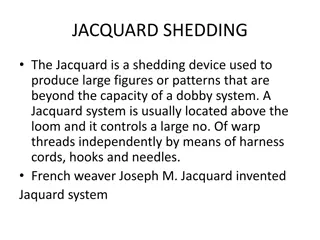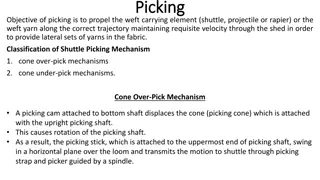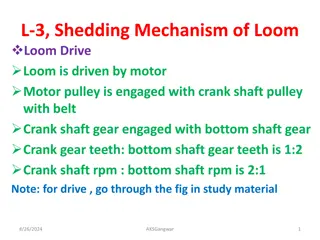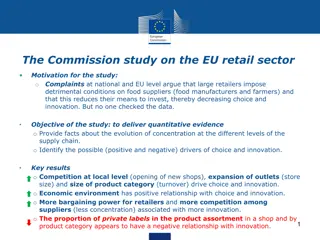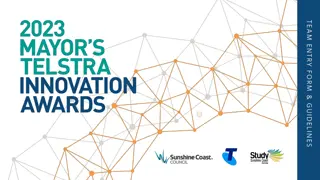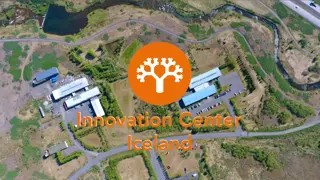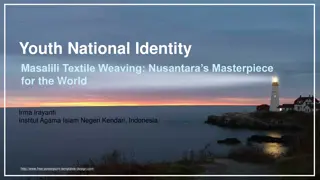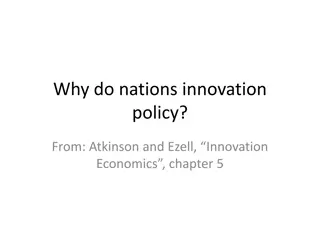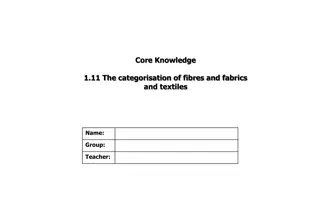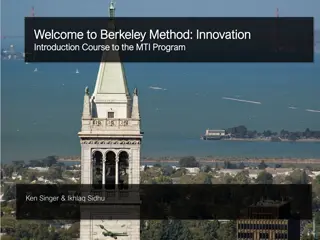Challenges and Opportunities in Handloom Weaving Innovation
Exploring the intersection of tradition and modernity in handloom weaving, this content delves into the challenges faced by the industry, such as sustainability and innovation. It highlights initiatives like adapting reactive dyes, inventing natural dyes, and the need for modernization and education. The narrative questions the sustainability of handloom livelihoods and products in a rapidly changing market landscape.
Download Presentation

Please find below an Image/Link to download the presentation.
The content on the website is provided AS IS for your information and personal use only. It may not be sold, licensed, or shared on other websites without obtaining consent from the author. Download presentation by click this link. If you encounter any issues during the download, it is possible that the publisher has removed the file from their server.
E N D
Presentation Transcript
Cultures of Innovation in craft handloom weaving Annapurna Mamidipudi Maastricht University October 2014
The handloom project The handloom project: relevance Adapting reactive dyes Inventing natural dyes Remembering indigo
Handloom weaving in India 4.3 million weaver families Second largest rural livelihood after agriculture 6.9 billion square meters of fabric
Textile Industry in India Parallel technological ensembles Mill 3% Power loom and Hosiery 86% Handloom 10% Khadi 1% Differentiated by levels of mechanization Different organizational and social relations
Industry in Crisis 47% below poverty line Livelihoods: Welfare rather than market driven Static rather than innovative Charity rather than value Invisible except when in crisis Technology: Product: Weaver: Therefore handloom is unsustainable!
The marketing program-DAMA The reactive dyes program- Handloom Co-operatives Wholesale-retail experience-Daram Designer weaver Next round of solutions? Upscale Mechanise Modernise Educate the obduracy of the handloom discourse
The handloom project How can handloom claim to be technology, when the loom is static? How can handloom livelihoods be sustainable, when weavers themselves leave weaving? How can handloom products be re-designed for new markets, when weavers refuse to change their mindset? How will handloom survive, when it does not innovate?
The socio-technical ensemble spinning Yarn trader dyeing customer dyer Warping drum Internet retailer warper designer sizer MOBILE PHONE Sizing shed Weaver- trader weaver Loom
Three changes in colour Adapting reactive dye technology Inclusion in the technological frame of handloom [Standardisation, skill ifying] [Bijker] Re-inventing natural dye technology pidgin recipes in the handloom ensemble [interactional expertise] [Collins] Redeeming Indigo dye technology Somatic expertise and materiality [Transmission of knowledge through memory practices] [Bowker]
Reactive dyeing skills: Inclusion in the technological frame
Natural dye technology Different kinds of expert groups: The driver, the housewife and the engineer Spaces of negotiation: Bus rides How to write a recipe [scientific/craft] Authenticity of practice
Indigo Remembering colour Smelling colour [saudu matti] Knowing colour [pachchi gaddi thinna gorre penda, chandrakali cheera] Multiplicity of memory practices: embodied craft, oral transmission, written archive, electronic database
Ordering socio-technical practices 1. Standardization and skillifying Market, production and interoperability 2. Interaction Interactional expertise [speaking Weaver ] 3. Craft knowledge as memory practice Conserving and transmitting somatic and material knowledge
Culture of Innovation: Recasting innovation as tradition The positive value of Continuity Traditional Uppada Jamdani The negative value of Innovation in traditional crafts Why do we need to innovate on a classic?
The case of Karnatic music Traditional Practices/Craft that comes before creativity Building skill through repetition Learning rules through imitation Becoming fluent through variation Performance ..creates uncertainty
The Divine Bliss of creativity Requires leaps of faith The importance of the Guru The moment of creativity: Experienced as the absence of self
The case of Science Building skill through practice (Hayes 1989) Learning heuristics through imitation (Dunbar 1995) Fluency and flexibility (Guilford 1950) Problem solving: Testing for creative ability (Weisberg, Reeves 2013)
The Eureka! Moment of creativity Leap of insight (Akin and Akin 1996, Ohlsson 2011) Supervision by teacher (Ericsson, Roring and Nandagopal 2007) The moment of creativity: experienced as unconscious creative process (Csikszentmihalyi 1996) .. the AHA! Experience of innovation
Importance of craft in innovation In Music and in Science First build craft through practice Innovation is accompanied by leap of faith/unconscious process acquiring Craft through Practice and Imitation is important precursor to Innovation
Can there be innovation without craft? (in handloom or in science or in music)





